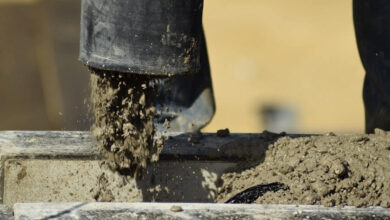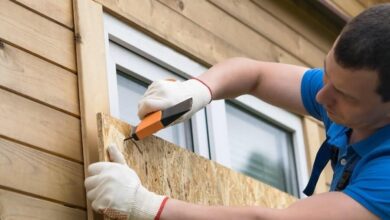Radon Remediation: How to Fix Your Home with Elevated Radon Levels

Radon, a colorless, odorless, and tasteless gas, silently permeates countless homes across the globe, posing a significant threat to human health. Its exposure, often seeping through cracks in foundations or entering through water sources, has been linked to an increased risk of lung cancer. It is a formidable foe hidden within the very structures meant to provide shelter and safety.
In this article, we explore radon contamination in homes, discussing the risks of elevated levels and effective remediation strategies to mitigate this radioactive gas.
Radon Testing
Assessing radon levels in your home is essential before beginning the journey of remediation to mitigate potential health risks. According to the Environmental Protection Agency (EPA), approximately one in every 15 homes in the US has elevated radon levels. This statistic highlights the urgency for radon testing, an essential measure in identifying and mitigating elevated levels in homes.
Gas testing serves as the foundational step in identifying the extent of contamination and determining the appropriate course of action. There are various methods available for conducting testing, ranging from short-term passive devices to long-term continuous monitoring systems.
Short-term tests usually run for 2 to 7 days, offering a brief overview of levels within that timeframe. In contrast, long-term tests extend over 90 days or more, providing a detailed analysis of fluctuations across various seasons and conditions. Both testing methods contribute to a thorough assessment of exposure levels in residential spaces.
It is essential to adhere to established protocols for accurate testing results, irrespective of the chosen method. Proper placement of testing devices in representative areas of the home, free from potential interference, is critical for obtaining reliable data. This reliable data then guides subsequent remediation efforts effectively.
Identifying Radon Entry Points
Understanding how the gas infiltrates your home is essential in devising effective remediation strategies. Radon typically enters buildings through openings in the foundation, such as cracks in floors, walls, or gaps around pipes and utility penetrations. Identifying these entry points is a crucial step towards mitigating levels and ensuring a healthier indoor environment.
According to the National Institute of Health, radon levels typically peak in basements or crawl spaces. However, it can accumulate in the air of any home or building, regardless of its sealing, draftiness, or age. Identifying and addressing its entry points enables homeowners to reduce concentrations, mitigating health risks linked to prolonged exposure effectively.
Regular inspections of your home’s foundation and structure are vital to pinpoint potential entry points. Visual assessments and detection tools aid in identifying areas of concern. Sealing cracks and enhancing ventilation in crawl spaces and basements effectively reduce infiltration. Also, installing effective mitigation systems like sub-slab depressurization further decreases exposure levels within living spaces.
Radon Mitigation Systems
In regions with heightened radon levels, implementing robust mitigation systems is crucial for resident safety. These systems are engineered to decrease concentrations in homes and buildings, mitigating the risk of exposure to this dangerous gas. Affordable Environmental Services asserts that radon mitigation systems effectively reduce radon levels by up to 99%.
By deploying effective mitigation measures, communities can safeguard the well-being of their residents from the threats posed by elevated levels.
In January 2024, CBS 17 News reported that data from the US CDC revealed alarming findings for North Carolina. A staggering 73 out of the state’s 100 counties registered indoor air radon levels exceeding safety standards, set at 4 pCi/L of air. Tragically, approximately 450 North Carolinians succumb to radon-induced lung cancer annually.
Given these statistics, the significance of radon mitigation systems, particularly in high-radon regions like North Carolina, cannot be emphasized enough. Homeowners in North Carolina facing elevated levels can benefit from specialized radon mitigation services tailored to the region’s unique geological characteristics. Seeking professional radon mitigation North Carolina services becomes imperative in safeguarding residents against the perils of gas exposure.
Effective mitigation systems employ various techniques to expel the gas from the indoor environment. Sub-slab depressurization systems are frequently installed to mitigate gas. These systems generate a pressure differential, expelling the gas from beneath the foundation to the exterior. Also, crawl space encapsulation and ventilation systems act as barriers, hindering infiltration from the soil into the home’s interior.
Professional Radon Remediation
Addressing elevated radon levels in your home necessitates the expertise of professional radon remediation services. These trained professionals bring the requisite knowledge, experience, and specialized equipment to effectively mitigate gas. By entrusting remediation to experts, homeowners can ensure a safer indoor environment for themselves and their families.
Attempting remediation without proper training and equipment can yield ineffective results. Professional radon remediation companies employ state-of-the-art techniques like sub-slab depressurization and crawl space encapsulation to reduce levels effectively. These experts conduct thorough assessments to identify entry points and customize mitigation solutions.
Homeowners in need of professional radon remediation services should promptly click on the “contact us” button on a reputable service provider’s webpage. This action allows them to schedule a consultation promptly and begin mitigating risks in their homes. Don’t hesitate to reach out and prioritize your family’s health and safety.
DIY Radon Remediation Techniques
While professional mitigation systems offer guaranteed results, many homeowners explore DIY radon reduction techniques as a more budget-friendly option. However, caution is crucial. DIY approaches are only suitable for homes with slightly elevated levels and require thorough research and meticulous execution.
Enhancing ventilation by regularly opening windows and doors aids in natural air circulation, reducing levels. Yet, this method is energy-inefficient and impractical in colder climates. A do-it-yourself sub-slab depressurization involving suction points under the slab can be attempted, but improper installation may worsen the issue, necessitating professional intervention.
One common DIY remediation technique involves sealing cracks and gaps in the foundation using specialized caulks and sealants. According to Healthline, sealing and caulking foundation cracks and openings help minimize the ingress of radon into homes. By preventing the gas from seeping through these entry points, homeowners can effectively reduce indoor radon concentrations.
DIY remediation techniques can help, but periodic testing ensures effectiveness. Consulting professional remediation services offers more comprehensive solutions.
Monitoring Radon Levels After Remediation
After implementing remediation measures, homeowners must continue monitoring radon levels to maintain effectiveness. Fluctuations may occur due to weather changes, soil conditions, and home modifications. Regular monitoring ensures ongoing safety from exposure.
Regular testing enables homeowners to evaluate the long-term effectiveness of remediation techniques and swiftly address any resurgence of gas. Short-term test kits, easily accessible, offer quick results, providing a convenient method for periodic monitoring of the levels.
Diligent level monitoring post-remediation helps homeowners sustain a safe indoor environment, mitigating long-term risks of radon-related health issues.
Safeguarding Your Home Against Radon
In the battle against radon, knowledge emerges as the most potent weapon. As we conclude the article, we found that proactive measures emerge as crucial for safeguarding our homes and loved ones from elevated levels. Remaining vigilant and informed empowers us to confront radon’s silent threat and establish homes as secure havens for generations to come. Let us unite to create a future free from these perils.




